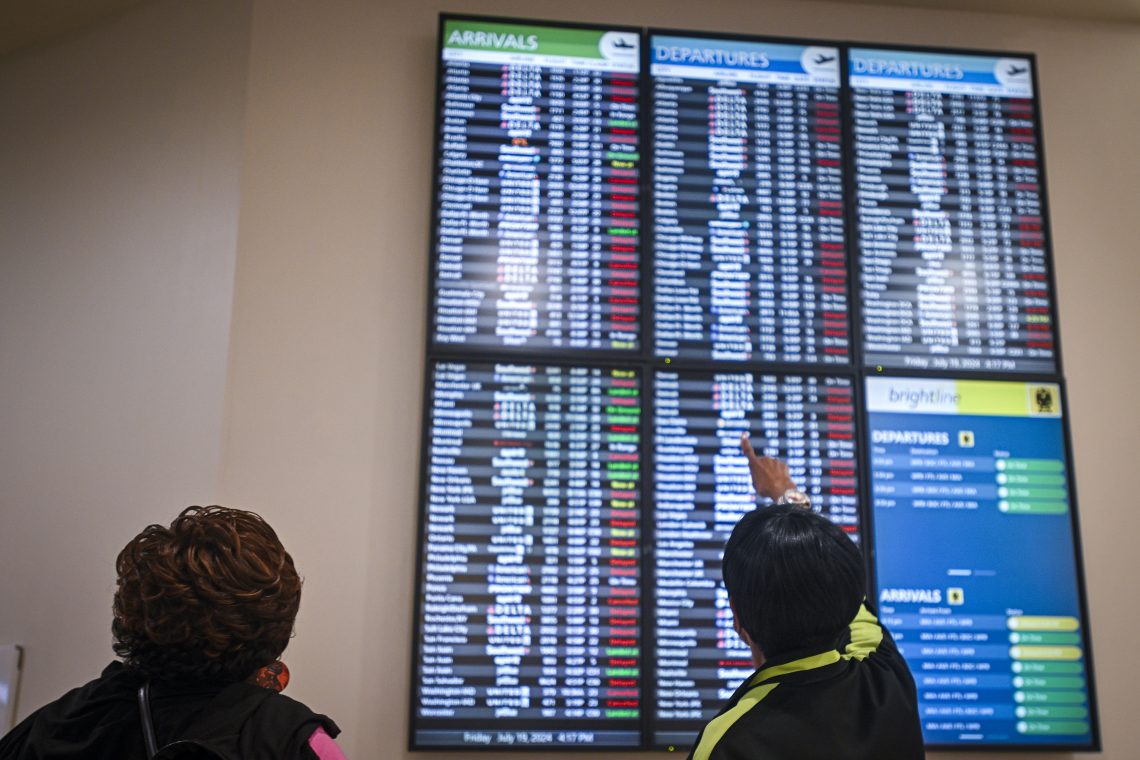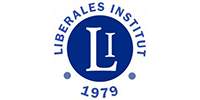Karl Marx and Switzerland
by Henrique Schneider*
“The key to the intricate and massive system of thought created by Karl Marx (1818-83) is at bottom simple: Karl Marx was a communist.” Rothbard (1995, 317) succinctly makes a crucial point for understanding Marx: His ideas are not primarily about economics, sociology, of philosophy – let alone about singular or aggregate law-like relationships such as wage and value, time and investment, household formation and capital accumulation. If Marx dwelt in those issues, it was only to serve his ultimate aim, the definition and institution of a new society, or, his version of communism.
Marxian Communism is not the outcome of some social mechanism. It is a goal to which all social mechanisms should be subservient. This goal equally subdues issues, theories, and frames of reference to its own implementation. While other forms of communism believed that such a system would be the eventual outcome, or, the synthesis, of human evolution, Marxian Communism was revolutionary. It is conceptualized as a synthesis, but one that has to be actively sought by revolution and enforced by the revolutionaries. Marxian Communism was about how to force and enforce the synthesis, thus, his idea of a synthesis was that human evolution as such is and shall be determined by an all-encompassing, synthetic, system.
Where did Marx learn to be a communist? While it would be wrong to claim that it was in Switzerland, it is certain that the alpine country served as an important case study for Marx. When studying Switzerland, Marx realized that a) revolutions are possible (in contrast to wars between armies); b) revolutions can take the form of a goal-oriented movement (in contrast to revolutions reacting against an undesirable state of affairs); and c) it is not the proletariat, but the lower bourgeoisie that revolts. While a) and b) were welcome indications that his own theories were right, c) was a double-edged sword. He might have wanted to co-opt the lower-bourgeoisie into a revolution against the upper bourgeoisie inspiring the proletariat to do the same. On the other hand, and as his friend Friedrich Engels was always ready to point out, the lower-bourgeoisie, even if coopted, is likely to turn into a conservative force. Hence again, the example of Switzerland.
Marx learned these facets as he studied the Swiss industrialization – in fact, the longest sentence in Das Kapital (1867) is about the Swiss watchmaking industry – and as he analyzed the Swiss “liberal” revolutions after 1813 until the formation of the Confederacy in 1848. In the Communist Manifesto (1848; with Engels), Marx admits that the proletariat is sluggish in taking political action. Taking the Swiss “liberal” movement as example, Marx thinks that the revolution begins with the activation of the lower-bourgeoisie and spreads to the proletariat. But to his eyes, and probably influenced by Engels, this dynamic is not without risk.
In the remainder of this essay, it will be discussed, what Marx learned from observing the Swiss “liberal” revolution, how he thought he could coopt the lower-bourgeoisie and why, at the end, he discarded this option for its dangers outweigh its potential rewards. While it will not be claimed that Marx realized all this because of Switzerland, it will be made clear how he employs the Swiss as a case study.
1.: Switzerland’s (Classic) Liberals
In the first half of the 19th century, many events took place in Switzerland. First, there was Napoleonic Occupancy and the Helvetic Period until after 1812. After its breakdown, there was a struggle between proponents of a “new order” and “restorative powers”. This struggle lasted from ca 1813 to 1848 and was driven principally by the “Freisinn”, the proponents of a “new order”. In 1848, the “Freisinn” succeeded in the formation of the Swiss Confederacy, but not without having risked a civil war. After 1848, the Swiss state developed and the “Freisinn” underwent a process of inner differentiation that led to the Swiss version of “direct democracy”.
From its onset, the “Freisinn” was anything but homogenous. Three main subgroups, each, in turn, composed of factions and fractions, come to mind. Some members of the “Freisinn”, especially the French-speaking part of Switzerland – who would call themselves “Les Radicaux”, wanted the instauration of a Constitutional Republic; others, especially around the centers of wealth Zurich, St. Gallen, Lucerne or Lugano advocated a decentralized system that would, cultivate democracy and republicanism but also allow for conservative values. The third group was mainly present in the lowlands between Zurich, Berne, and Basel, i.e. in (now) Cantons of Baselland, Argovia, or Solothurn. Their members wanted a minimal state and free trade according Lockean and Smith’ian doctrines (Schneider 2018).
In the eyes of Marx, this last group was the most interesting. Their leaders did not confine themselves to discussion clubs, as French-speaking “Radicaux” did; nor did they sit in Councils as the wealthy industrialists and traders of the more urban “Liberale” did. This third subgroup was mainly composed of small entrepreneurs and craftspeople – the small and medium companies of today. They went to the streets. They organized sieges against the police whom they suspected of protecting the “old order”; and they organized campaigns against the conservative regions. In the eyes of Marx, these small capitalists and craftsmen organized a goal-oriented revolution changing the way politics was done in Switzerland. At the end, they were successful. All these groups merged into the Swiss Liberal-Radical Party – “Freisinn” – movement succeeding in creating Switzerland in 1848. These more vocal Libertarians would not cease to put pressure on the newly-created state. They still demanded “direct democracy”. The possibility of the people changing the Constitution was enshrined in the Constitution of 1848, the possibility popular veto against laws came into force 1874 – only after the third sub-group threatened with armed conflict (Schneider 2018).
Without having a special interest in the alpine country, Marx followed the developments in Switzerland. By observing them, Marx learned three lessons: 1. the small bourgeoisie can truly be revolutionary. 2. This is due two factors. They have enough capital to afford action and they were educated in order to understand that their position could be improved by collective action. 3. A revolution for a cause can be as powerful as or even more powerful as a revolution against a cause.
Watching the events unfold in Switzerland and learning from it does not mean that Marx approved of them. Marx did not trust the lower-bourgeoisie, and especially Engels despised the Swiss lower-bourgeoisie.i But unlike Utopian Communists, Marx called himself a Scientific Communist; and the same applies to Engels. Instead of formulating the goal of an ideal society and letting this goal being progressively achieved through many iterations of Hegelian thesis-antithesis-synthesis, Marx was interested in finding out the mechanisms that could lead to the synthesis and forcing them to come by the means of a revolution. Switzerland’s bourgeois revolution was more than food for thought to him.
In the Communist Manifesto (1848), Marx and Engels clearly identify the revolutionary potential of the Bourgeoisie:
“The bourgeoisie, historically, has played a most revolutionary part. The bourgeoisie, wherever it has got the upper hand, has put an end to all feudal, patriarchal, idyllic relations. It has pitilessly torn asunder the motley feudal ties that bound man to his “natural superiors,” and has left no other nexus between man and woman than naked self-interest, than callous “cash payment.” It has drowned out the most heavenly ecstacies of religious fervour, of chivalrous enthusiasm, of philistine sentimentalism, in the icy water of egotistical calculation. It has resolved personal worth into exchange value, and in place of the numberless indefeasible chartered freedoms, has set up that single, unconscionable freedom—Free Trade. In one word, for exploitation, veiled by religious and political illusions, it has substituted naked, shameless, direct, brutal exploitation.”
The question is now, how to harness this power not for the bourgeois, but for the Communist revolution?
2.: Switzerland’s industrialization
For Marx and Engels, the solution was clear. They would have to persuade the lower-bourgeoisie that that it is them that have been exploited or will become exploited by the high-bourgeoisie, the capitalists. Marx and Engels would have to convince the low-bourgeoisie that it is them that inevitably will descend into to the proletariat if they don´t revolt first. However, for Marx and Engels, convincing was not a question of mere semantics or rhetoric. It was about looking for law-like developments that supported their claim. They found them. The key for bringing together the lower-bourgeoisie of their day with the proletariat of the future was the theory of alienation.
There are different types of alienation. On the one hand, there is alienation in the people from each other. This is the alienation of class. In the Marxian goal, the classless society would overcome this estrangement. On the other hand, there is alienation from the worker regarding her or his product. In the capitalist mode of production, the worker invariably loses the ability to determine life and destiny by losing the ability of being the director of her or his own action. By being deprived of ownership over the means of production, workers become means of production themselves. Thus, Marx’ solution was to socialize all means of production turning every worker in an owner and a director.
How does this relate to Switzerland? Marx – and Engels – observed the fast industrialization of the alpine republic. They also realized the intricacy of its industrial development was not perfectly framed by the capitalist-proletariat dichotomy. Instead, many early industrial tasks were performed by artisans and craftsmen. Years later, reflecting on it, Marx exposes the complicated networks of value creation between capitalists and their small and medium suppliers in what is, in fact, the longest sentence in Das Kapital (1967). It describes the Swiss watchmaking industry in Le Locle and the Jura.
“Formerly the individual work of a Nuremberg artificer, the watch has been transformed into the social product of an immense number of detail labourers, such as mainspring makers, dial makers, spiral spring makers, jewelled hole makers, ruby lever makers, hand makers, case makers, screw makers, gilders, with numerous subdivisions, such as wheel makers (brass and steel separate), pin makers, movement makers, acheveur de pignon (fixes the wheels on the axles, polishes the facets, &c.), pivot makers, planteur de finissage (puts the wheels and springs in the works), finisseur de barillet (cuts teeth in the wheels, makes the holes of the right size, &c.), escapement makers, cylinder makers for cylinder escapements, escapement wheel makers, balance wheel makers, raquette makers (apparatus for regulating the watch), the planteur d’échappement (escapement maker proper); then the repasseur de barillet (finishes the box for the spring, &c.), steel polishers, wheel polishers, screw polishers, figure painters, dial enamelers (melt the enamel on the copper), fabricant de pendants (makes the ring by which the case is hung), finisseur de charnière (puts the brass hinge in the cover, &c.), faiseur de secret (puts in the springs that open the case), graveur, ciseleur, polisseur de boîte, &c., &c., and last of all the repasseur, who fits together the whole watch and hands it over in a going state (1867, Volume 1, Page 370).”
In this example, Marx is looking at the complex and decentral nature of watchmaking. Every task is done by a specialist. Each specialist only cares about his task without even bothering to consider the final product in its totality. The only agent that understands the final product, the watch, is the capitalist entrepreneur. But as the specialist is confined to his interest in his task, his labor is not rewarded as a contribution to the whole, but only as the completion of his small task. Unlike many other places in Europe, here the specialists were not employed workers, but small and medium craftsmen and artisans- the same small and medium businesspeople that went to the street to claim their rights. Marx – and Engels – developed the theory that these SME, by allowing themselves to be caught by the capitalist logic of alienation would eventually be exploited, too. They, too, would only be receiving their wage for the task as opposed to their share on the overall product.
Realizing this, Marx – and Engels – would tie the two strings: 1. The specialist worker is not part of the proletariat; he is a lower bourgeois. 2. The specialist worker is not aware of his exploitation by the capitalist entrepreneur because the specialist doesn’t look at the whole but focusses on his task. The specialist SME is equally alienated from the product as the proletariat is. 3. As a (moderately) educated person, if the specialist worker were made to look at the whole, he would understand the exploitation and would be willing to remedy it. These lessons became part of the later version of the Communist Manifesto (1848):
“The weapons with which the bourgeoisie felled feudalism to the ground are now turned against the bourgeoisie itself. But not only has the bourgeoisie forged the weapons that bring death to itself; it has also called into existence the men who are to wield those weapons—the modern working-class—the proletarians.”
But who is the future proletariat, according to the Manifesto? No, it is not the pauper low-level workers, but the specialists and the lower-bourgeois.
“No sooner is the exploitation of the labourer by the manufacturer, …The lower strata of the Middle class—the small tradespeople, shopkeepers, and retired tradesmen generally, the handicraftsmen and peasants—all these sink gradually into the proletariat, partly because their diminutive capital does not suffice for the scale on which Modern Industry is carried on, and is swamped in the competition with the large capitalists, partly because their specialised skill is rendered worthless by new methods of production. Thus, the proletariat is recruited from all classes of the population. … The lower middle-class, the small manufacturer, the shopkeeper, the artisan, the peasant, all these fight against the bourgeoisie, to save from extinction their existence as fractions of the middle class.”
This is why the strategy of co-opting lower-bourgeois to revolutionize against the capitalist mode of production could work. They were trapped in the same alienation as the proletariat. They would become the proletariat of the future. But at the same time, they still had the resources – education and finances – as well as the experience of how to lead a revolution. However, this strategy was not without risks.
3.: Danger
Marx was primarily interested in harnessing the power of these lower-bourgeois. But he also knew that there were risks to this. Especially due to the influence of Engels -see Endnote – Marx pondered that even if they were alienated and exploited, they were still small-bourgeois. As such, they were potential exploiters, too. And especially, they worked primarily for their own benefit – benefit being the amassing of their own private property. The Communist Manifesto (1848) – in a passage initially drafted by Engels – warns:
“They (the Middle Classes) are therefore not revolutionary, but conservative. Nay, more, they are reactionary, for they try to roll back the wheel of history. If by chance they are revolutionary, they are so, only in view of their impending transfer into the proletariat, they thus defend not their present, but their future interests, they desert their own standpoint to place themselves at that of the proletariat.”
The warning was at least partially right: In Switzerland the Communists supported the Radicals, without losing sight of the fact that this party consisted of many, some of them antagonistic, elements, for example democratic Socialists, in the French sense, radical bourgeois, or even libertarian. But they were never supported back. In Marx’s theory, this was due to the fact that the bourgeoi subscribe to a logic of individualism while the communists subscribe to collectivism, first by creating class-solidarity, and then, by creating a common society without classes. The bourgeois, instead, was committed to individual wealth and quality of life. So different were these logics that Marx realized that it was futile trying to reconcile them.
In the second half of the 19th century, Switzerland developed on the basis of individual responsibility and individual autonomy. It was and became hostile to any form of collectivism (including conservative collectivism but excluding corporatism), especially towards Marxism, Socialism, and Communism. In fact, Switzerland was so hostile to Communism, that inter alia because of the Swiss example; the later Marx would even oppose taxes (Critique of the Gotha Programme, 1875):
That, in fact, by the word “state” is meant the government machine, or the state insofar as it forms a special organism separated from society through division of labor, is shown by the words “the German Workers’ party demands as the economic basis of the state: a single progressive income tax”, etc. Taxes are the economic basis of the government machinery and of nothing else. In the state of the future, existing in Switzerland, this demand has been pretty well fulfilled. Income tax presupposes various sources of income of the various social classes, and hence capitalist society. It is, therefore, nothing remarkable that the Liverpool financial reformers — bourgeois headed by Gladstone’s brother — are putting forward the same demand as the program.
Because of Switzerland’s bourgeois program, most communists turned their backs on direct-democracy. There was a lively debate inside the Second (Socialist) International on whether direct democracy is a progressive demand and therefor worth any support from the workers movement. Some Swiss delegates argued strongly in favor of direct legislation through the people, while the general line was one of a rather critical attitude. After all, Switzerland was consolidating a bourgeois state in which Marxism had no place and revolution would be anathema. Or, as one delegate astutely noted: “If the people can pass legislation, they will not revolt against the legislation they themselves can easily change (Joseph 1996, 136 ff.).”
At the end, from his point of view, Marx was right to fear the bourgeoisie as a group. At least until the end of existing socialism, the bourgeois stood united against Marxism. The Liberal-Radical Party in Switzerland, the same people Marx was trying to coopt, demonstrated their anti-communist resolution. From ca. 1880 to ca. 1910, the “Freisinn” ran campaigns with the motto: “red today – dead tomorrow”, or, much clearer in German: “Heute rot – morgen tot.“
Reference
Joseph, D. (ed.) (1996) Rechtsstaat und Klassenjustiz. Texte aus der sozialdemokratischen Neuen Zeit 1883–1914.
Marx, K. (1867) Das Kapital Band 1.
Marx, K. (1875) Critique of the Gotha Programme.
Mark, K. and Engels, F. (1848) The Communist Manifesto.
Rothbard, M. N. (1995). An Austrian Perspective on the History of Economic Thought: The Classical Economists. Elgar.
Schneider, H. (2018). Freisinn – ein libertärer Stosstrupp. Eigentümlich frei, online.
* Henrique Schneider ist Volkswirt, Ressortleiter im Schweizerischen Gewerbeverband und in der Erwachsenenbildung tätig.
































